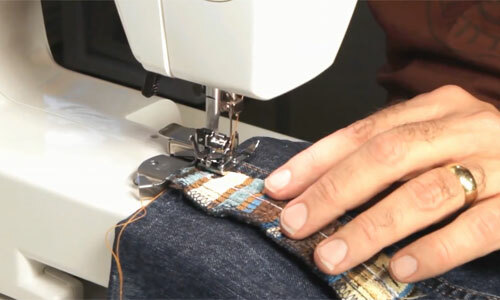Laminate has spread and became popular due to its versatility. Floor finishing coat of this type is placed in all areas of the house - from the nursery to the kitchen.
During operation of such a floor covering discomfort arises as to the touch laminate is cold. This is especially felt in the winter. To overcome this drawback, use insulation under laminate onto the concrete floor.
Activities on the floor insulation should be carried out correctly in order to cover a longer period served.
General recommendations for floor insulation
The first step is to prepare the ground. Gender should be qualitatively align. To eliminate this existing irregularities and cracks and crevices embedded solution and shpaklyuyut.
If the floor is very uneven, with the existing differences between the rooms, it is better to make a new concrete floor using self-leveling mixture.
Then carry out the works on waterproofing. Apply polyethylene film, which is spread on the floor. Issued dock edges overlapped and glued seams with tape. Waterproofing serves to protect the floor structure from moisture.

Insulated timber floor, insulation material placed in the gap between joists. From above, to align the surface of the stack of blister floor edging boards or chipboard. Then it sets a substrate and a laminate plank.
Thermal insulation of concrete floor under the laminate can be made between the beams. Top make dry screed and set the substrate. In order not to raise the severely floor level, use foil tape. It is adhered to the surface by means of special leveled floor.
The use of the substrate
Laminate is not placed directly on the floor. When walking, it can produce squeaky sounds. In continuous operation castles at the junctions break from the stress and between the panels will be ugly gap. In all existing recommendations for mounting the laminate, it is recommended to use a substrate thickness greater than 3 mm.
When the temperature drops condensate appears beneath the panels, and the substrate to protect the floor covering from its negative impact.
Despite the fact that the minimum dimensions of the substrate (1 cm), it performs the following functions:
- It acts as a thermal material;
- It possesses sound insulating properties;
- It serves as an additional waterproofing layer.
When laying the substrate necessary to ensure that the seams when joining it with the laminate did not coincide. Therefore, the material is placed perpendicular to the flooring panels. substrate side with longitudinal grooves for air gyre facing downwards.

Natural substrate to be used in locations where special environmental requirements (bedroom, nursery). The substrate is placed gradually, in small bands, which is enough for two or three rows of the laminate. So it will be clean and smooth, without any strain.
Distinguish these types of substrates:
- Corkboard. Different ecological safety and long service life.
- Bitumen-cork. It is used in environments with high humidity levels, as it has good waterproofing properties.
- Made of composite materials. It combines the characteristics of polyethylene and granulated polystyrene.
- Izolon. It has the long life. In other words, it is foamed polyethylene.
- Styrofoam. It serves high-quality insulation for the floor under the laminate. Available in rolls and flat sheets.
A characteristic feature of the substrates is a sound absorption ability and increasing the temperature of the floor covering.
Choosing the type of insulation
The choice of insulation affects the base (concrete or wood) and the temperature in the rooms. For example, when installing a wooden floor, expanded clay is used. Its poured layer of at least 10 cm.
As the heat insulating material is used:
- Mineral wool. Relatively expensive with a long service life. This type of insulation on top veiled Foil.
- Styrofoam. With its help level the surface of the concrete foundation before stacking the laminate.
- Ecowool. According to its characteristics reminiscent of mineral wool. But it is made of cellulose, which makes it safer for human health.

- Foam and penoplex. Material with a grainy texture has good heat and sound insulation qualities, different practical use and light weight.
- Foil. The product is available in a roll and sheet form. Placed reflective (shiny) side down.
- Polyurethane foam. Use filler and sprayed view of the heater. He retains heat well, but may be a bit to absorb moisture. Their own hands, this material is difficult to stack, so you have to hire craftsmen.
As the insulation of concrete floor stands and radiant floor heating. His device is quite time-consuming process that requires planning stage screed.

These materials are placed under the screed or they act as a tie under the laminate. Each of these materials has its own advantages and disadvantages.
Using foam
Foam along with Penoplex are the most common building materials used for thermal insulation of the floor inside the house. To do this, they have all the necessary properties:
- low price;
- a light weight;
- easy installation.
The material decay or susceptible to combustion. Not breathable, which makes it possible to install it as insulation under the screed.
The disadvantages of foam as an insulation material, include its destruction during the operation. Penoplex contains more toxic substances, making it more resistant to deformation.
Thermal insulation with a base under the laminate is carried out in several ways using the foam.
The most popular method is a device for foam ties. Flat sheets of material laid on the rough concrete base. On top of them pour a thin layer of screed. When it is completely dry start to lay laminate.

Coupler can be arranged, and on a different principle. In its preparation for pouring the prepared surface, using foam pellets. They are added directly to the cement-sand mortar. It is important for uniform distribution of granules solution, otherwise the efficiency of this method is negligible.
On the second floor of a private house with foam set lag device. Directly on the concrete base installed bars to size. Between them is placed the foam sheets. For ease of stacking, the distance between the bars should match the dimensions of the foam sheet.
Top foam covered with plywood boards or other material. This floor does not carry heavy loads.
Thermal insulation of concrete floor keramzit
Laminated insulation coating carried material which has a different structure. For example, loose expanded clay, which is a good insulator.
Due to manufacturing variability, expanded clay has high thermal insulation properties. The raw materials for its production acts clay that is fired in several stages.
Concrete block placed in several ways. The simplest is considered dry screed. Expanded clay scatter directly on a concrete base. Top make a thin layer of screed sand-cement mortar. It should be thick enough to prevent the floating of expanded clay. Above the flooring plank. Recommended expanded clay layer - 10-15 cm.

Expanded clay is added directly into the concrete. When pouring the solution thus obtained under a warm base floor.
Another option - insulation with a lag. This method is used when making the concrete floor is impractical, for example, on the second floor of the wooden house. Insulation poured directly between the joists and the top plank of chipboard panels or boards.
keramzita advantage that the work can be carried out on their own, without the involvement of artists and without the use of additional devices.
The use of glass and foil
These materials are also popular as a heater. Foil produced in the form of rolls or flat sheets. The advantages of this material are as follows:
- unlimited service life;
- It does not absorb moisture;
- It has excellent thermal insulation properties.
foil styling is different. The side with the heat-reflecting layer should be placed upward. This will significantly reduce heat loss in the room.

Related article - ways insulation of concrete floor.
The mineral wool as the insulating material has a low cost. It is a material with good performance and high rate vapor barrier. To put insulation under laminate undertaking additional base floor waterproofing.
Warming of the floor expanded polystyrene
Installation of thermal insulation products simple and its cost is low. The product is a high pressure foamed polystyrene granules. The process takes place with the use of an inert gas and granules initially have the form of a viscous liquid.
Expanded polystyrene has a number of advantages:
- Increased moisture resistance;
- light weight and easy transportation;
- withstands temperature changes;
- It does not change the shape and size during the operation;
- not being influenced by mold and mildew;
- easily machined and does not produce dust during handling;
- the material is not fragile and can be easily installed in place.
polystyrene sheets may differ in thickness. Their edges are flat or with grooves for tighter connection. The material is well used for thermal insulation of the floor on the lower floors, since it does not absorb moisture. The operation period of polystyrene up to 15 years under normal loads on the surface of the laminate.

Work carried out in the following sequence. First dismantled old flooring. Thus purified surface from dirt and dust. Then, in rough foundation laid waterproofing material - polyethylene (or roofing felt). Material is set parallel to the walls and covered with insulation film and constructing flooring. For it is used straight-edged boards or chipboard. Insulation between the deck and leave a gap of 8-10 cm. Top plank laminate
When installing styrofoam sheets laid between the joists strips 50-60 cm. The voids between the pictures and lags sealed with foam.
If on top of the insulation is a concrete screed on top of her set a reinforcing mesh. Its solution is poured first layer (3-5 cm), and then after the setting of concrete and final layer. Styrofoam pellets additionally used for solution preparation.
Warm floor
Installation of water warm floors in the apartment - this is a new modern method of warming the concrete base under the laminate. Such a floor and arrange for the ceramic coating.
On a concrete foundation is laid electric cables or water pipes are installed in the grooves cut through concrete. They emit thermal energy from operation of the gas or coal-fired boiler, or from house supply system.

It is a multilayer structure, and comprises:
- thermally reflective material;
- a protective film;
- of floor heating.
When installing electric floor heating thermostat, pay special attention to. It can help you avoid sudden changes in temperature and significantly extend the life of the floor heating system. On some days the warm floor is heated before laying laminate.
When selecting a heater under the wooden floor frame is used the method of its installation. First set joists and insulation therebetween. Take for foam, mineral wool, expanded polystyrene, expanded clay.

The advantage of this method is that it is not necessary to make the screed and expect it dries.



